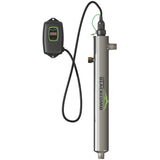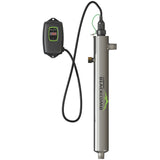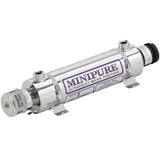The Curious History of Ultraviolet Blood Irradiation
Posted by Nick on for ProLampSales

At a press conference in April, President Donald Trump mused about using ultraviolet light to kill COVID-19 inside a person's body. While the suggestion may have been sarcastic, speculative, or outlandish, there has been evidence that ultraviolet irradiation is effective against coronaviruses, including SARS, MERS, and COVID-19.
The fact that ultraviolet UVC light deactivates a wide range of viruses, bacteria, mold, and fungi is no secret in the medical or lighting industries. Major lighting manufacturers like GE, Philips, Osram, Ushio, and others are still producing or have produced in the past a full line of UVC light bulbs.
Specialty ultraviolet bulb companies like Atlantic Ultraviolet, American Ultraviolet, Light Sources, and others have also been developing hundreds of variations of UVC bulbs for decades.
In June 2020, Signify (formerly known as Philips Lighting and still selling lighting products under the Philips name) and Boston University proved that UVC light sources deactivate the SARS-CoV-2 virus which causes COVID-19. The testing was done on surfaces.
In addition, the International Ultraviolet Association put out a Fact Sheet referencing studies on near-relative viruses of COVID-19 which were also deactivated by UVC light. Both SARS-CoV-1 and MERS-CoV are susceptible to ultraviolet germicidal irradiation.
So COVID-19 and other coronaviruses can be deactivated in air, water, and on surfaces, according to studies done over the past decade.
Because UVC light can quickly damage human skin and eyes, its use is not recommended for disinfecting humans or animals. So although skin is a surface that may carry a virus, ultraviolet light would cause damage before reaching the level necessary to deactivate the virus. UVC disinfection of skin is out.
But what about blood?
The short answer is that ultraviolet disinfection of blood is also probably out.
Interestingly, though, ultraviolet irradiation of blood was researched quite a bit in the 1940s and 1950s, but fell out of favor due to the higher efficacy of antibiotics and vaccines. In fact, the first treatment on a human took place in 1928 as a last resort for a patient. The patient made a full recovery.
Ultraviolet blood irradiation (UBI) was used to treat a large list of diseases, with research starting in the United States and continuing in Russia and eastern countries.
While UBI was shown to be effective in treating humans and animals, there is some confusion as to WHY it is effective. It is surmised that ultraviolet exposure can stimulate the immune system.
A system was developed called the Knott Technic of Ultraviolet Blood Irradiation, removing blood intravenously, citrating it as an anticoagulant, and passing it through a chamber for UVC irradiation with a low pressure mercury (253.7nm) UVC bulb, after which the blood was re-perfused.
Dozens of conditions and diseases were tested with UBI, including the following:
- Acne vulgaris
- Chronic blepharitis
- Chronic paranasal sinusitis
- Furunculosis
- Infectious arthritis
- Mastoiditis
- Pelvic cellulitis
- Peritonitis
- Puerperal sepsis
- Osteoarthritis
- Secondary anemia
- Septic abortion
- Tuberculosis glands
- Typhoid fever
- Uveitis
- Viral hepatitis
Confusion exists as to why UBI works, and it seems to be a different mechanisms than ultraviolet irradiation of water, air, and surfaces. With traditional UVGI, the ultraviolet light damages the DNA of microbes. But this does not seem to be the case directly with UBI, and there is no evidence that the UVC light kills or deactivates pathogens in the blood.
Instead, ultraviolet blood irradiation causes a phenomenon called "hormesis," also known as "biphasic dose response," which describes the fact that low exposure to toxins or other stressors can generate a favorable biological response -- inducing protective or therapeutic effects.
This is perhaps the main reason that UBI was done in low doses. Not all of the person or animal's blood is irradiated, with 5-7% being the max beyond which more harm than good is done.
Unfortunately, research on UBI in the United States substantially diminished after the 1940s and 1950s. The initial research coincided with developments of penicillin antibiotics and the Salk polio vaccine, which were more effective and easier than UBI.
However, the rise of antibiotic-resistant pathogens and the increase in ultraviolet germicidal irradiation for other applications may regenerate the UBI industry. The UBI market today is very small, but some companies are still investing in it.
So, although ultraviolet irradiation of blood is not currently recommended or used for treating COVID-19 or other diseases, it has a curious, underground history. And it may have more of an effective and affordable future than far UVC.
Note: much of the background for this article comes from this more technical source.
- Posted in Ultraviolet Light
Featured Products (View All)
0 Comments




